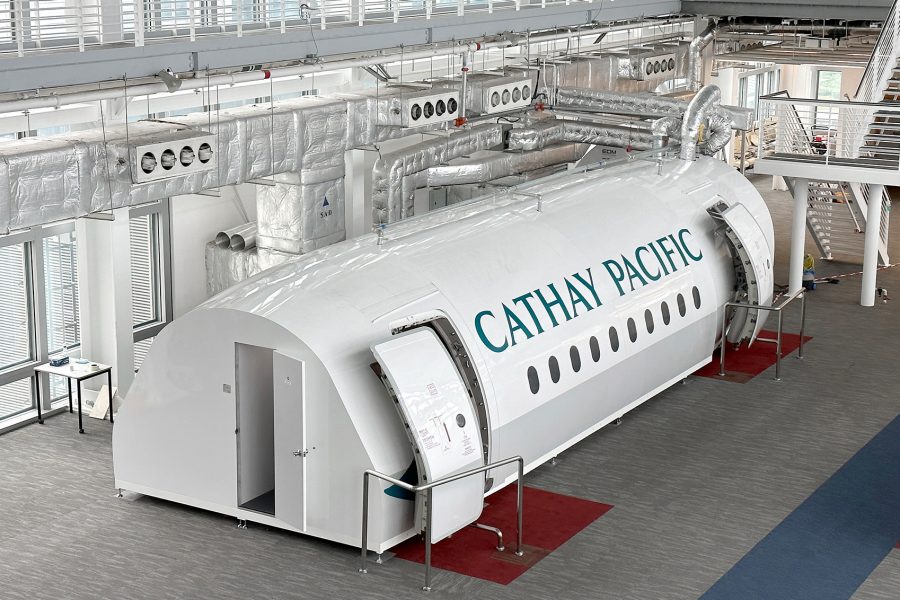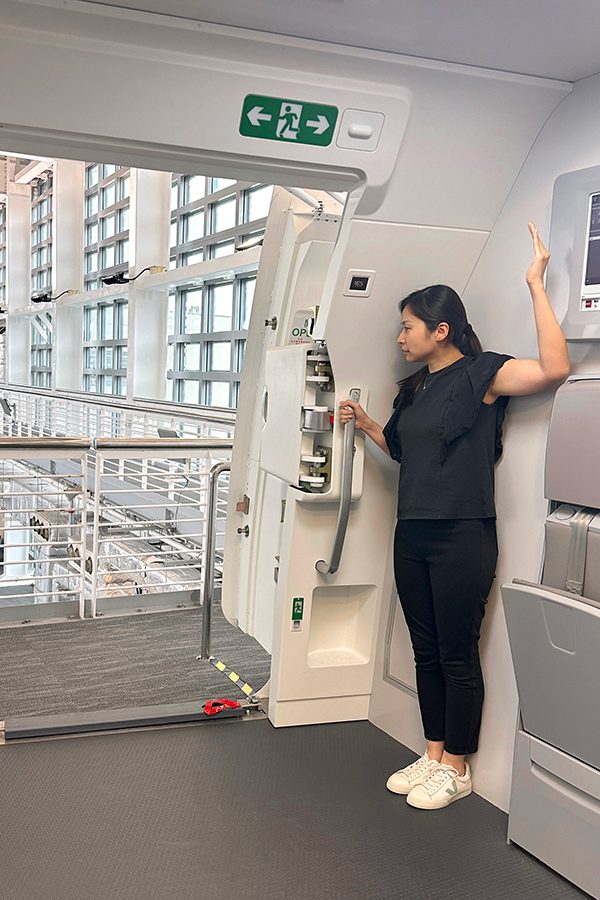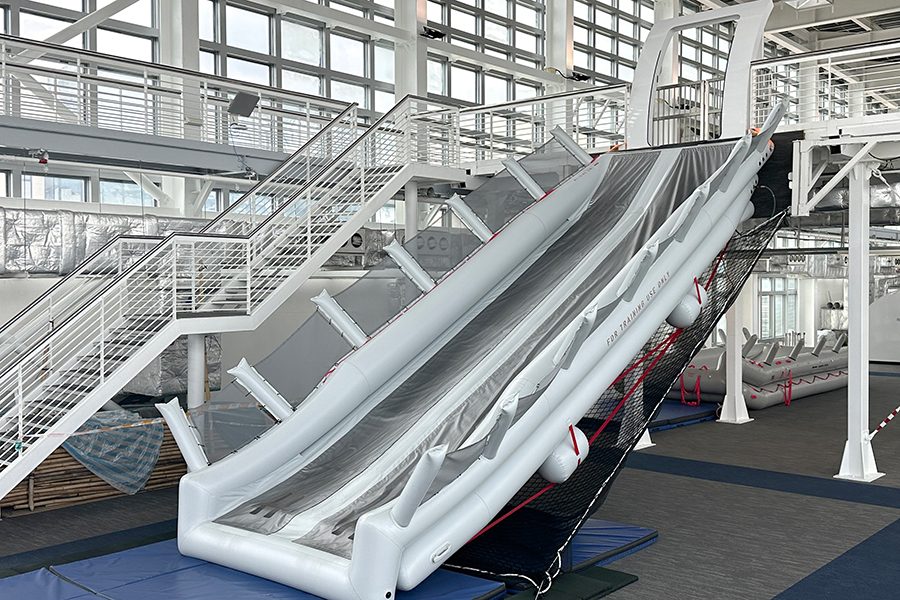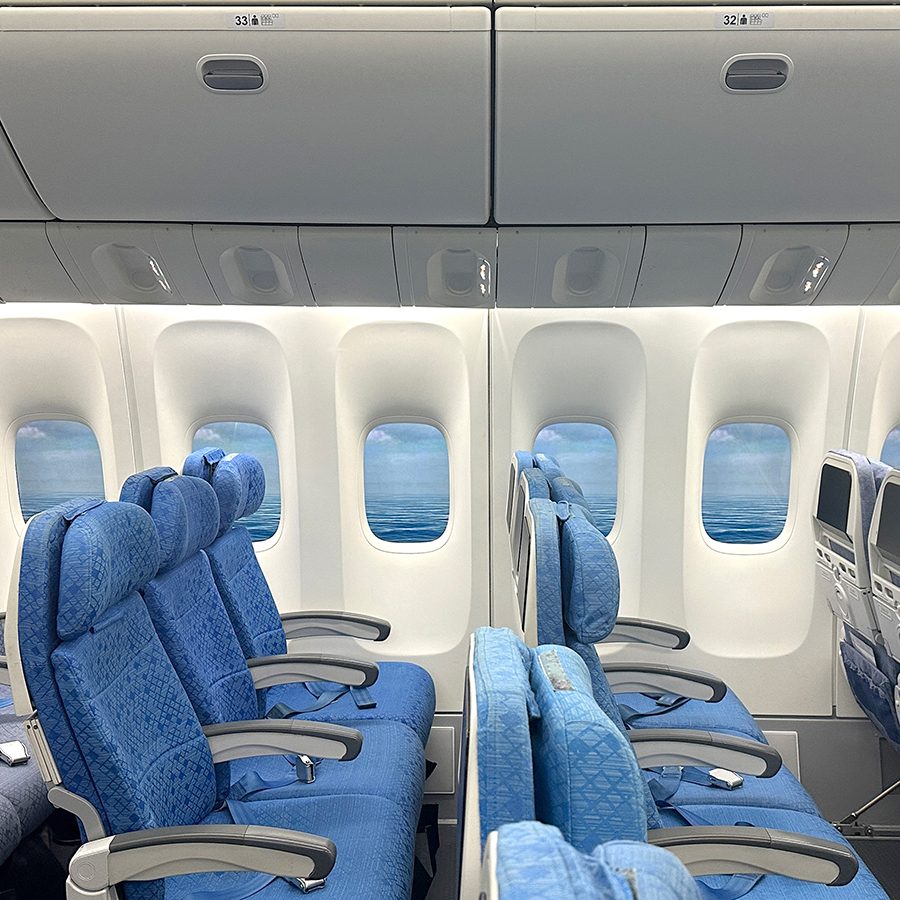How we fly: an inside look at Cathay Pacific cabin crew safety training

Opening a door: it’s something we do regularly without thinking. But what if your job and, potentially, people’s lives depended on how that door was opened?
Rigorous safety standards are critical to aviation and central to all of Cathay Pacific’s operations. Cabin crew are not only there for service delivery but also to act quickly and decisively in the case of an emergency.
Crew members’ aptitude in these vital skills, from aircraft evacuations to cardiopulmonary resuscitation (CPR), are tested every year as a regulatory requirement. These assessments take place in a building directly adjacent to Cathay City in Hong Kong, just a few floors above the flight simulators where pilots hone their craft and undergo their own evaluations.

Credit: Derek Kung

Credit: Derek Kung

Credit: Derek Kung
It’s a large and peculiar space containing different aircraft parts, inflated emergency slides and standalone aircraft doors. Lots of doors. Here, groups of 24 cabin crew at a time come for their yearly training and assessment. Some of the training takes place in a cabin mock-up, which conjures up emergency scenarios, and whose “windows” are screens that show everything from a normal high-altitude flight to the spray from a water landing. Added realism is provided by smoke machines and sound effects, controlled by the Flight Operations Safety Training Team, overseen by Safety Training Manager Katy Wu.
Six crew members occupy cabin crew seats, while classmates sit in the cabin to act as passengers. Come the inevitable incident, the duty crew must check whether it’s safe to open the door they are stationed near (that would, in real life, trigger the rapid inflation of the emergency slide) and evacuate the others. “But in some scenarios, trainers might add extra effects like blocking the door or pretending that the slide doesn’t inflate,” says Wu. The crew are then assessed on how they react to these additional stressors within the simulation.
Crew members cannot fly until they get it right. “We do give second chances,” adds Wu. “Let’s say they forgot something, like evaluating the situation outside before opening the door. We’d question them to make sure they understand or ask them what they would do next time.”
The doors are important because they are sophisticated examples of engineering and there is a technique to opening them – all the more so while under duress. As Cathay Pacific’s cabin crew are licensed to operate on three aircraft types, they need to understand the differences between all the doors and open them flawlessly. This is a mandatory assessment required by the aviation regulator, as are the exercises around CPR and putting out fires. The regulator only requires, for instance, CPR and emergency door operations assessments every 36 months, but Cathay Pacific chooses to assess them every year to ensure industry-leading standards are maintained.
Again, if the crew get it wrong, they are required to retake the test at some point over the two-day course. “During the course, we have to assess them on their emergency equipment knowledge – as in, where it’s stowed on each aircraft, how to operate it, and the pre-flight checks to ensure it’s all there,” says Wu. “They also have to show us their abilities in the firefighting and smoke drills.”
All of this culminates in a written exam that the crew must pass. “We send them relevant materials so that they can revise using computer-based training ahead of the course,” says Wu. It’s a good reminder that the same hands that serve you that signature cocktail also can save your life.
More inspiration
- China – the Chinese Mainland, Hong Kong SAR, Macao SAR and Taiwan Region
- Hong Kong SAR - English
- Chinese Mainland (China) - English
- Taiwan, China - English
- 香港特別行政區 - 繁體中文
- 中国內地 - 简体中文
- 中國台灣 - 繁體中文
- Africa
- South Africa - English
- Asia
- Bangladesh - English
- Korea - English
- Singapore - English
- Cambodia - English
- 한국 - 한국어
- Sri Lanka - English
- India - English
- Malaysia - English
- Thailand - English
- Indonesia - English
- Maldives - English
- ประเทศไทย - ภาษาไทย
- Indonesia - Bahasa Indonesia
- Myanmar - English
- Vietnam - English
- Japan - English
- Nepal - English
- Việt Nam - tiếng Việt
- 日本 - 日本語
- Philippines - English
- Australasia
- Australia - English
- New Zealand - English







